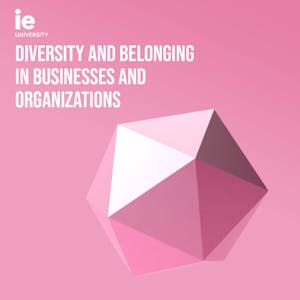Diversity and Belonging in Businesses and Organizations
About this Course
This course on Diversity and Belonging in Businesses and Organizations will support individuals, teams, and organizations to better understand and implement policies and practices that promote the inclusion as well as the belonging of all employees. We aim to cover the following topics: Policies - How to identify and understand the ways in which the structural dynamics of an organization can preclude a sense of belonging and how to use inclusive policies as a tool to foster belonging. Practices - How to design an organizational culture that promotes the well-being and belonging of all its constituents through kindness, empathy, openness, and compassion. People - How to leverage the creation of affinity groups and task forces to overcome structural biases, build community, and create a greater sense of belonging. The final module of the course provides complementary resources to bring course concepts together and support an organization\'s belonging efforts.Created by: IE Business School

Related Online Courses
The Foundations of Teaching for Learning programme is for anyone who is teaching, or who would like to teach, in any subject and any context - be it at school, at home or in the workplace. With... more
This comprehensive course equips you with skills to leverage Azure for building and deploying Large Language Model (LLM) applications. Learn to use Azure OpenAI Service for deploying LLMs,... more
This specialization equips developers with the essential knowledge and skills to build responsible AI systems by applying best practices of Fairness, Interpretability, Transparency, Privacy, and... more
With growing age, income, and ethnic diversity, customer expectations are also becoming more diverse. Therefore, it is becoming difficult to satisfy all customers with growing but divergent... more
This course, part 1 of a 2-course sequence, examines the history of rock, primarily as it unfolded in the United States, from the days before rock (pre-1955) to the end of the 1960s. This course... more








